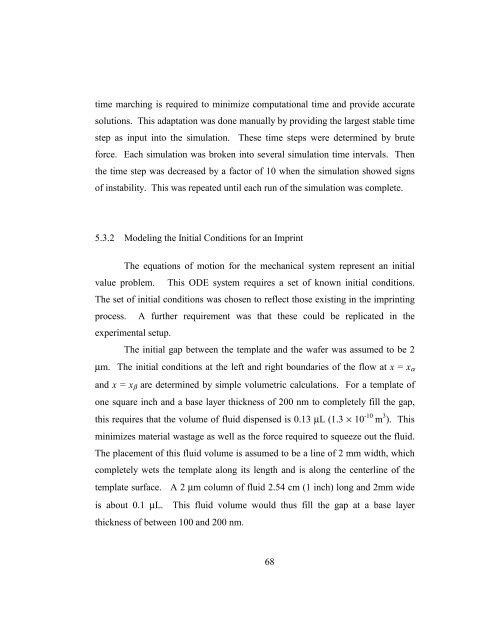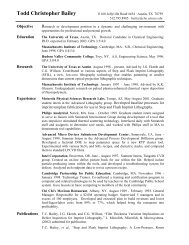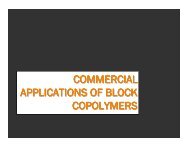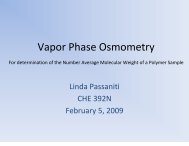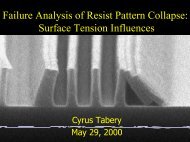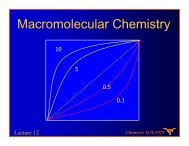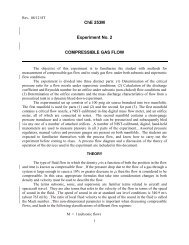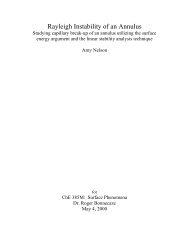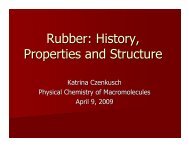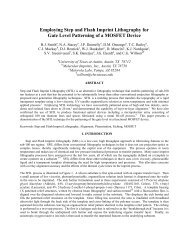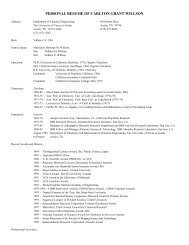Asymmetric fluid-structure dynamics in nanoscale imprint lithography
Asymmetric fluid-structure dynamics in nanoscale imprint lithography
Asymmetric fluid-structure dynamics in nanoscale imprint lithography
- No tags were found...
Create successful ePaper yourself
Turn your PDF publications into a flip-book with our unique Google optimized e-Paper software.
time march<strong>in</strong>g is required to m<strong>in</strong>imize computational time and provide accuratesolutions. This adaptation was done manually by provid<strong>in</strong>g the largest stable timestep as <strong>in</strong>put <strong>in</strong>to the simulation. These time steps were determ<strong>in</strong>ed by bruteforce. Each simulation was broken <strong>in</strong>to several simulation time <strong>in</strong>tervals. Thenthe time step was decreased by a factor of 10 when the simulation showed signsof <strong>in</strong>stability. This was repeated until each run of the simulation was complete.5.3.2 Model<strong>in</strong>g the Initial Conditions for an Impr<strong>in</strong>tThe equations of motion for the mechanical system represent an <strong>in</strong>itialvalue problem. This ODE system requires a set of known <strong>in</strong>itial conditions.The set of <strong>in</strong>itial conditions was chosen to reflect those exist<strong>in</strong>g <strong>in</strong> the impr<strong>in</strong>t<strong>in</strong>gprocess. A further requirement was that these could be replicated <strong>in</strong> theexperimental setup.The <strong>in</strong>itial gap between the template and the wafer was assumed to be 2µm. The <strong>in</strong>itial conditions at the left and right boundaries of the flow at x = x αand x = x β are determ<strong>in</strong>ed by simple volumetric calculations. For a template ofone square <strong>in</strong>ch and a base layer thickness of 200 nm to completely fill the gap,this requires that the volume of <strong>fluid</strong> dispensed is 0.13 µL (1.3 × 10 -10 m 3 ). Thism<strong>in</strong>imizes material wastage as well as the force required to squeeze out the <strong>fluid</strong>.The placement of this <strong>fluid</strong> volume is assumed to be a l<strong>in</strong>e of 2 mm width, whichcompletely wets the template along its length and is along the centerl<strong>in</strong>e of thetemplate surface. A 2 µm column of <strong>fluid</strong> 2.54 cm (1 <strong>in</strong>ch) long and 2mm wideis about 0.1 µL. This <strong>fluid</strong> volume would thus fill the gap at a base layerthickness of between 100 and 200 nm.68


